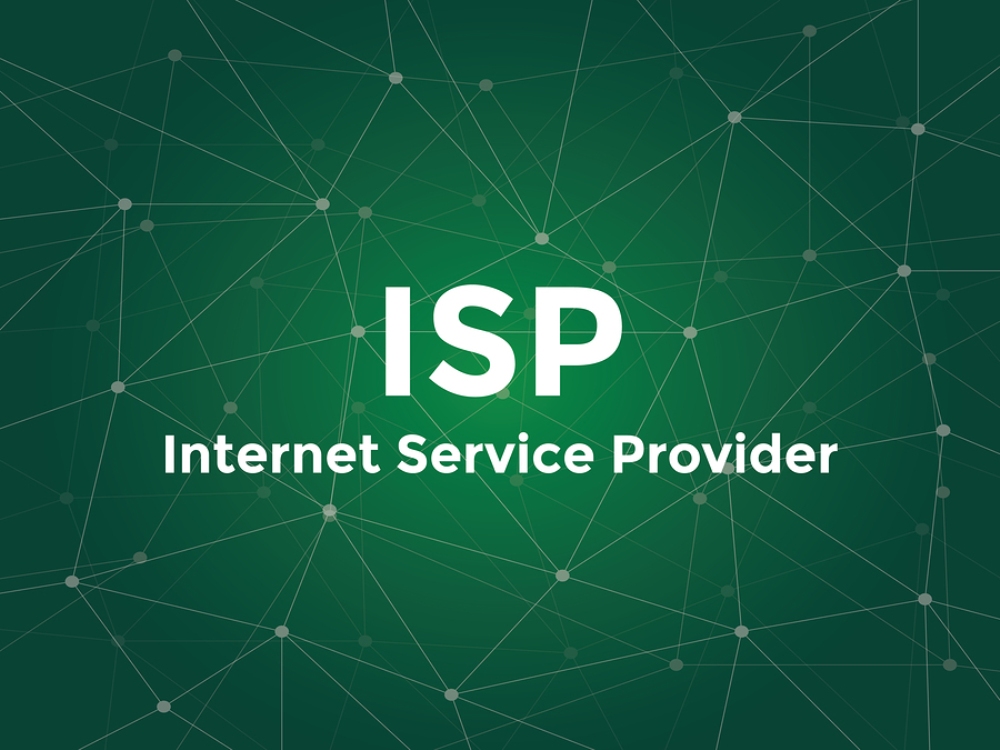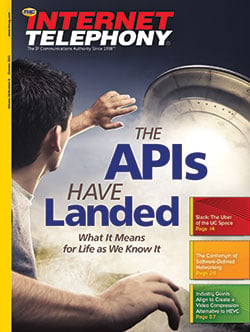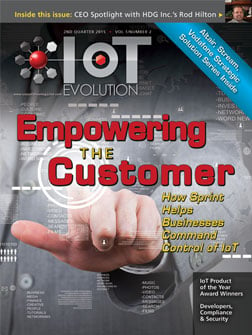
By now, the most hated industry in the country just might be Internet Service Providers. Thanks to the FCC’s (News - Alert) bungled rollout of “network neutrality” rules, followed by an even more bungled repeal, the popular press and much of the public is in a panic about their ability to access the Internet content of their choice: Maybe it will be direct web censorship. Maybe access to web sites will be sold like cable channels, in little bundles with separate price tags. Maybe “paid prioritization” will mean that a handful of big rich sites will force everyone else into a “slow lane” that makes them next to inaccessible. A true parade of horrors! All this because most people now expect the worst from their ISPs.
This isn’t because the ISPs have been doing a bad job; mostly they’ve been doing a good job in the face of very difficult circumstances. Today, thanks to Netflix, Hulu (News - Alert), and other big-screen video services, average usage is about ten times what it was a decade ago. ISPs have kept up. And so have the bad guys – the botnet operators, DDoS attackers, spammers, spoofers, script kiddies, and others who recognize just how vulnerable the Internet’s four-decade-old architecture is. Go back 20 years and there was no streaming, very little VoIP, and the web looked much more primitive (which in retrospect may have been better than today’s ad-filled mess).
Yet 20 years ago, more people liked their ISPs. And nobody gave a thought to regulating them. The dotcom bubble was just about to get underway, and every part of the Internet ecosystem was drawing in more capital than it could sanely use. And when the “network neutrality” kerfuffle started in 2005, it was mostly followed by insiders and net-heads; the general public and the popular press didn’t get quite so riled about it. So what happened?
ISPs were originally competitive customers of the telephone companies
The seeds of negativity go back to the vertical integration of the ISP with the underlying telecommunications carrier. In the 1990s, when the Internet became open to the public, the telephone companies were common carriers, strictly regulated monopolies. They had no choice about who they sold services to. And the Computer II rulings from 1980 required that if they offer an enhanced service – basically anything other than voice telephone calls, including Internet – via their own carrier facilities, they had to make the underlying basic service available to everyone else. They were thus strictly forbidden from leveraging their monopoly to advantage their competitive businesses.
The Telecom Act of 1996 enshrined that distinction in its own definitions of telecommunications service --- basically the old basic service, and information service – a very slight broadening of the old enhanced service category. And in 1996 it was well understood that the FCC, via Title II, regulated the former, not the latter. That’s why the whole public Internet ecosystem evolved so rapidly between 1992 and 1998. No ISP had monopoly power; it was fully competitive. Peering agreements, Internet exchanges, content delivery networks, and hosting centers all came into being without the FCC’s involvement, except to require that the telephone companies provide circuits to all ISPs on demand, generally on equal terms.
So you got to choose your ISP. In the dial-up world, you dialed up the one you wanted. In the DSL world, the ISP purchased raw DSL transport to its customers from the telephone company. In most places multiple ISPs were thus available via DSL. Customers who had a choice of ISP generally felt good about their choice, or picked another ISP. And being just a choice kept the ISPs from behaving badly. They weren’t literally “neutral” – treating all packets equally would cause collapse or at least violate anti-spam norms – but they were responsive.
But only telephone companies were regulated as common carriers. There were self-provisioned ISPs too, companies who didn’t rent their circuits from the telephone companies. Most prominent among these were the cable companies. They didn’t have the same obligation to make their basic transmission services available to everyone else, though ISPs thought they should, as they also had advantages from their video incumbency. This led to a series of regulatory fights culminating in 2002’s Brand X Supreme Court decision, which held that telephone and cable companies were indeed different and the latter did not have to open their networks.
In the early 2000s, the big telephone companies had the inside track at the FCC and cable was on the outs. So the FCC ruled that when telephone companies installed fiber optic networks, they didn’t have to open those to competition. That was supposed to be an incentive to install fiber. Verizon even held off on starting its FiOS (News - Alert) rollout until (nod nod wink wink) they won that “relief”. But Computer II was still in effect for DSL, leaving an avenue for independent ISPs to have at least some “broadband” service.
A historic mistake
In 2004, Verizon (News - Alert) petitioned to have the FCC forbear from enforcing Computer II obligations, and in 2005 the Commission obliged. That was a mortal blow to most ISPs. Dial-up was by then almost dead, so most ISPs didn’t have a leg left to stand on. Some ISPs could still reach some of their customers by using unbundled copper loops, which CLECs could still lease until they were replaced by fiber, but that was a more limited, difficult alternative. And it doesn’t handle today’s higher speeds. Wireless ISPs began to proliferate too, but that was mostly practical in rural, not urban, areas.
So odds are you have no more than two choices of ISP. You take the telephone company (DSL or fiber), or you take cable. In many places that choice has narrowed down to one. Verizon, for instance, has grandfathered DSL: If you have it you can keep it but you can’t order it. And they’ve pretty much stopped rolling out FiOS. So if you are in a non-FiOS area, it’s cable or nothing. The other big telcos aren’t investing much in fiber to the home either.
Did the telephone companies benefit from this? Almost certainly not! Their captive ISPs already had the lions’ share of the DSL customers by 2005, and the profit was in the actual telco DSL, not the service-intensive retail end. (Verizon had reported that its Verizon Online ISP was losing money, while wholesale DSL was making good profits for their telephone operating companies.) So this wasn’t a good business decision. It took away independent ISPs as a channel to help sell DSL, and, more importantly, it almost immediately ignited the Network Neutrality firestorm. And they’ve probably spent more on lawyers and lobbyists dealing with that than the extra profits they might have made by kicking off the other ISPs
So what on Earth were they thinking? For one thing, telcos have monopoly DNA: They would rather have more control than more profit.
But at the time (2005) it really was a threat to the Internet. While cable companies liked the Internet, which was incremental profit, telephone companies hated it. The Internet broke their business model, which was based on overpriced long-distance calls.
The carriers came up with another idea of how to monetize the Internet. Deep Packet Inspection was becoming available. Vendors really were proposing ways to replace open Internet access with application-specific services and pricing. And the telcos were interested. In fact, in an article warning about the risks of granting the Verizon petition, I suggested that the telcos wanted to replace their Broadband Internet with “Fat Wasteband”. That name didn’t catch on. Its opposite, “network neutrality”, coined a few months later, did.
With great power comes great responsibility
But if there’s one thing that the past 12 years have taught us, it‘s that the public will not stand for anything like those schemes. They want the Internet to at least look pure and simple. They don’t want to know about the wizards behind the curtain perpetuating the illusion of neutrality, so long as the illusion works. So even if there were no regulation – and note that the Federal Trade Commission has gotten back authority to regulate ISPs again for deceptive practices or abuse of market power – ISPs would be unlikely to do anything trotted out on the Parade of Horrors. It would invite new competition and new regulation, and customers wouldn’t stand for it. They don’t want the pendulum to swing too far again.
The recent Restoring Internet Freedom Order, which revoked Title II regulation of ISPs and restored their freedom, was met with derision by the vast majority of the public. They saw it as the unshackling of a critical monopoly, one that was already exempt from price regulation. And monopolies aren’t to be trusted. And monopolies are normally regulated. How could it not get worse with less regulation?
Competition was fun while it lasted. The FCC refuses to bring it back. They allow telcos to offer raw transport to other ISPs (few do), but that would be subject to a Universal Service tax most recently set at 19.5%. Vertically-integrated ISP services are tax-exempt.
The biggest companies that call themselves ISPs today are the telephone companies and cable companies. It’s still sexier to be an ISP than to be a phone company, AT&T (News - Alert) and Verizon are putting almost all of their investment money into the wireless sector, which has its own panache. If you associate “ISP” with lack of choice, then of course you are not going to be happy with them. Not necessarily because they offer bad service, but because they are monopolies, and demand to stay that way. They insist on being suspect.
And that’s why people hate ISPs.
Edited by Mandi Nowitz
 Internet Telephony Magazine
Click here to read latest issue
Internet Telephony Magazine
Click here to read latest issue CUSTOMER
CUSTOMER  Cloud Computing Magazine
Click here to read latest issue
Cloud Computing Magazine
Click here to read latest issue IoT EVOLUTION MAGAZINE
IoT EVOLUTION MAGAZINE




